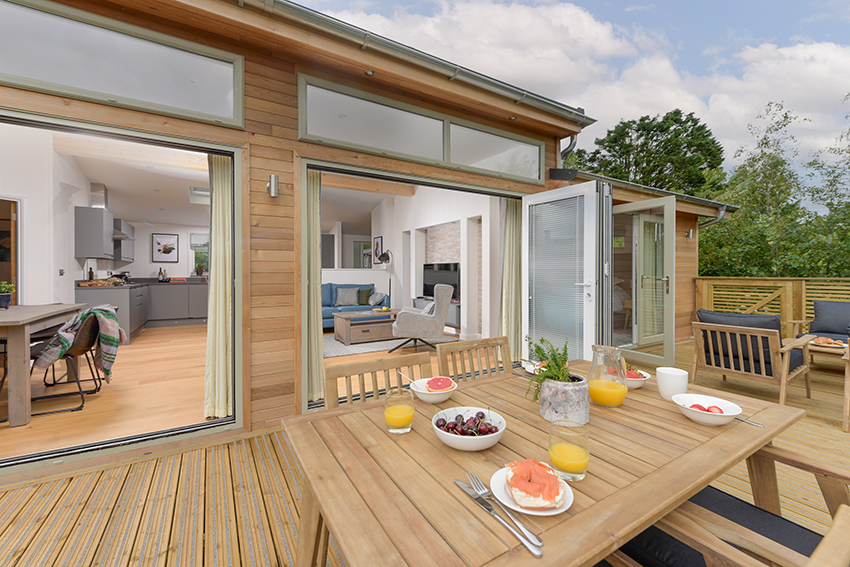5 Tips To Keep Birds Off Your Caravan Roof
Image source: Parklink.uk
Birds are a sight to behold when they are up in the sky flying in spectacular formations. However, birds can be quite a nuisance when they perch on your holiday caravan roof.
Besides the annoyance from continuous pecking and screeching claws noises, birds make life in quiet and peaceful holiday parks much more tranquil and fulfilling. But the acidity from their droppings will gradually erode your new caravan roof. Second, birds’ faecal matter also presents a health hazard because it is a breeding ground for over 60 harmful diseases. Fortunately, there are humane bird deterrent methods to preserve your roof; check them out below:
1. Use Hunting Bird Replica And Other Visual Decoys
Carnivorous bird replicas are practical bird-proofing tools as common roof-invading birds like pigeons and seagulls fear hunter birds like hawks, eagles, falcons, and owls. As a result, they instinctively scamper for safety when they spot any carnivorous birds. Therefore, installing predatory bird decoys along your roof will deter other birds from landing on it because they will associate your roof with danger.
However, consider the following pointers when choosing a hunting bird replica. First, consider life-size sculptures of the predatory birds for maximum effect; bird decoys with glowing eyes and moving parts are scarier. Second, choose bird replicas modelled from weatherproof material.
Note that the “bird brain” myth is a bust because birds eventually realize you are playing them if the “scary bird” is always perched at the same place. Therefore, move your bird decoy around between landing areas every three to four days.
Besides predatory bird decoys, you can also use reflective strips. According to a recent research study, the “birds like shiny things” myth is also a bust because birds fear shiny objects.
Lastly, moving objects like scare balloons, windsocks, and kites akin to predatory birds also keep annoying birds at bay. Therefore, you can use different visual deterrents alongside each other or complement the other bird-proofing methods listed below.
2. Bird Spikes On Static Caravan Roof
Bird spikes resemble the spike strips that the police erect on roadblocks but are smaller with significantly thinner needles. Despite their intimidating appearance, bird spikes are humane to the birds and eco-friendly.
The spikes function as visual barriers that tell the birds your roof or any other designated area is a dangerous landing ground. Therefore, they only deny the birds perching space without inflicting any bodily harm.
Bird spikes are reliable long-term bird deterrence tools because high-quality spikes are durable and require little to no maintenance after installation. Moreover, high-quality bird spikes include a 15-25 year warranty regardless of its construction material.
Also, bird spikes installation makes an easy and fun DIY project. However, besides the warranty, consider the following fundamental factors when shopping for the ideal bird spike for your bird situation:
First, note that the length and angle placement of the needles of a bird spike determines the tool’s efficacy in warding off different bird species. For instance, dense needle patterns are more effective in deterring smaller bird species, while long and thin needles hinder larger birds. Therefore, establish the bird species that often perch on your holiday caravans and consider buying bird spikes designed to deter the specific bird species.
Image Source: Parklink.uk
3. Bird Repellent Gels and Sprays
Bird repellent sprays and gels only cause birds superficial discomfort without inflicting any bodily harm. The gels and sprays form a sticky film when applied to your caravan roof.
Consequently, when birds land on your roof, they find the sticky feel on their feet uncomfortable and opt to find a more conducive surface to land.
Note that birds have a pretty good memory; one recent research study shows that birds remember novel tasks for up to two years. Therefore, they will not perch on your roof for a while after the “sticky situation.”
Bird repellent gels are both cost-effective and eco-friendly bird deterrents. They form a thin transparent film over your roof, so they will not alter the aesthetics of your new static caravan roof.
Moreover, gels can withstand extreme temperatures both during the summer and in the winter. Finally, you do not need professional help to apply bird repellent gels, and one application lasts up to a year.
However, some caravan holiday homeowners are wary of store-bought bird repellent gels and believe they contain harmful chemicals. Therefore, they opt for DIY bird repellent sprays that they make using natural food-grade ingredients.
The most popular DIY bird repellent spray recipe is an infusion of chilli peppers, apple cider vinegar, and water. Therefore, if you are passionate about eco-conservation, you can take the homemade bird repellent route.
4. Bird Netting
Bird netting is a flexible and high-strength mesh structure covering a large flat surface to keep feral birds at bay. It is a fantastic alternative to bird spikes, as bird spikes often only cover ledges and are not very effective on flat caravan roofs. Covering your entire caravan roof surface with bird spikes is costly and will most likely interfere with the curb appeal.
Note that bird nettings are flexible so that it wobbles when a bird tries to perch on it causing the bird to fly away and look for more stable surfaces. Therefore, bird netting does not inflict physical harm or distress because it neither traps nor tangles the birds.
However, bird netting requires professional installation; poorly installed bird netting is ineffective and may harm the birds. But paying for bird netting installation is a worthwhile investment. High-quality bird netting is weather-resistant and will last at least ten years, depending on material quality.
Image Source: Parklink.uk
5. Ultrasonic Repellent Devices
Birds, just like other animals, have a better hearing capacity and can decipher sound frequencies that are below human hearing range. Therefore, ultrasonic devices utilize low-frequency sound to keep feral birds at bay.
The main advantage of ultrasonic devices as bird deterrents is that only the birds and other critters can hear the low-frequency noises. Therefore, you can keep pesky birds at bay without infringing on your neighbours. Moreover, ultrasonic bird repellent devices are easy to install and require little to no maintenance; there are also weatherproof models available for outdoor use.
However, note that you cannot use ultrasonic bird repellent devices in areas within proximity of bat habitats because bats are a protected species in the UK.
Image Source: Parklink.uk
Conclusion
Birds are incredibly annoying when they invade your static caravan holiday home because they make it impossible for you to enjoy your time out. But birds are also an essential part of the ecosystem and need protection. Therefore, always consider using humane and eco-friendly bird proofing methods to mark your boundaries.










